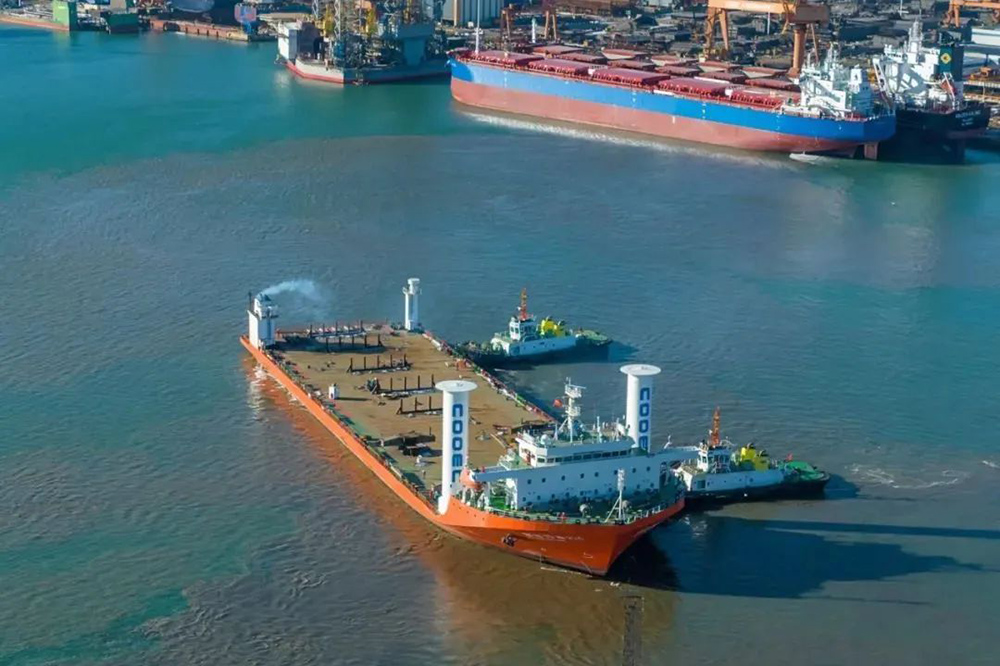China Offshore Oil Engineering Company (COOEC) has commissioned the first wind propulsion system for ships developed in China.
COOEC is one of the largest EPC service providers for the offshore oil & gas sector in the Asia-Pacific region. “COOEC’s rotor sail system project configured a functional detachable base and integrated intelligent centralized control system for the first time, which can automatically detect the wind speed and direction of the route and adjust the working setting of the rotor sail to obtain the maximum kinetic energy,” the company explains. [ds_preview]
The rotor sail system now in operation has been installed on both sides of the foredeck of the heavy-lift vessel “Hai Yang Shi You 226” and consists of an outer tube made of composite material, an inner tower made of steel, a motor and a base. With an overall height of 18 m and a diameter of 4, the weight per turbine is 40 tons.
Once the rotor sail system has been installed, the “Hai Yang Shi You 226”, which was built in 2010, is expected to save an average of 12% fuel and reduce carbon dioxide emissions by around 412 tons per year. COOEC also points out that the system can operate at a maximum speed of 200 revolutions per minute even at an ambient temperature of -25 °C and is therefore also suitable for use in Antarctic waters.

Rotor sails are modern variants of the Flettner rotor. The rotating cylinders use the Magnus effect, which creates a force directed transverse to the incoming flow. Fuel savings of between 5 and 30 % are said to be possible for ships as a result. With stricter IMO environmental regulations regarding ship efficiency, the technology is becoming increasingly interesting for shipping companies. For example, the EEDI value of ships can be significantly improved.









